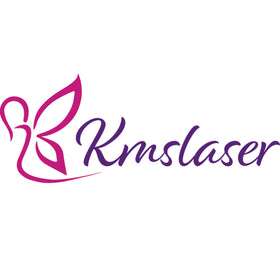Are you wondering if shockwave therapy works long-term? This noninvasive therapeutic procedure is becoming increasingly popular with #brandowners, distributors, beauty #salons, salon #owners, spa owners and #clinics alike. Shockwave therapy has been proven to be effective in treating a variety of musculoskeletal conditions from plantar fasciitis to shoulder tendinopathy. In this blog post we will explore the scientific evidence surrounding shockwave therapy so you can confidently decide whether it is appropriate for your needs or not. We'll look at what exactly constitutes a successful treatment outcome and how long those effects typically last for. Plus learn why consistency plays such an important role in achieving optimal results!
Overview of shockwave therapy and what it is used for
#Shockwave therapy is a relatively new treatment option that has been gaining traction in recent years. It involves the use of high-intensity sound waves to stimulate tissue repair and relieve pain. Generally used for musculoskeletal conditions such as tendinitis, plantar fasciitis, and tennis elbow, it has also been shown to be effective in treating kidney stones and erectile dysfunction. While the idea of sound waves being used in medical treatment may seem unusual, the evidence supporting its effectiveness continues to grow. For those seeking a non-invasive and drug-free approach to pain and injury relief, shockwave therapy may be worth considering.
Benefits of shockwave therapy - relief from chronic pain, increased range of motion, improved circulations
Chronic pain can be a debilitating condition that can greatly affect a person's quality of life. Fortunately, shockwave therapy offers a non-invasive option that provides many benefits. This innovative therapy uses pressure waves to stimulate the body's natural healing process, promoting healthy circulation and tissue growth. The relief from chronic pain is one of the most significant benefits of #shockwavetherapy, allowing individuals to lead more active and fulfilling lives. The therapy also improves range of motion, allowing individuals to move more freely without discomfort. Furthermore, shockwave therapy promotes healthy circulation, which can lead to faster healing times and improved overall health. Overall, shockwave therapy is an excellent option for those seeking non-invasive and effective treatment for chronic pain.
Types of shockwave therapy available - low-energy vs high-energy
When it comes to treating certain medical conditions, shockwave therapy has become an increasingly popular method. But did you know that there are actually two different types of shockwave therapy available? There's low-energy shockwave therapy and high-energy shockwave therapy. Low-energy is typically used for treating conditions such as tendonitis and plantar fasciitis, while high-energy is often used for treating issues like kidney stones and fractures. Both types of therapy use acoustic waves to promote healing, but the key difference is the amount of energy used. So which type of shockwave therapy is right for you? It ultimately depends on the specific medical condition you're dealing with, as well as factors like your age and overall #health. It's always best to consult with a healthcare professional to determine the best course of treatment for your individual needs.
How to ensure long-term results with shockwave therapy - frequency & duration of treatments
Shockwave therapy is a highly effective non-surgical treatment for a variety of conditions, from musculoskeletal injuries to erectile dysfunction. However, to achieve long-term results, it's important to adhere to a proper treatment plan. This includes the frequency and duration of treatments. It's recommended that patients receive shockwave therapy sessions once a week for several weeks, with each session lasting around 20-30 minutes. This allows for a gradual buildup of healing effects in the body. It's also important not to skip any sessions, as consistency is key to achieving long-term results. By following a consistent treatment plan, patients can expect to see improvements in their condition that last for months if not years.
Potential risks and side effects associated with shockwave therapy
While shockwave therapy has become a popular treatment for various conditions, including plantar fasciitis and tennis elbow, it is important to understand the potential risks and side effects that come with this type of therapy. While the treatment itself is non-invasive and typically performed on an outpatient basis, some patients may experience discomfort during or immediately after the procedure. In rare cases, patients may experience bleeding or infection at the site of the shockwave treatment. It is important to discuss any potential risks and side effects with your healthcare provider before undergoing shockwave therapy. With proper precautions and careful consideration, shockwave therapy can be an effective and safe treatment option for many patients.
Tips on choosing a qualified practitioner for your shockwave therapy treatment
When it comes to choosing a practitioner for your #shockwavetherapytreatment, it's important to do your research. One of the first things to look for is proper certification and training. Make sure they have the proper credentials and experience in providing this type of therapy. Additionally, it's important to consider their patient reviews and track record of success. A qualified practitioner should be willing to answer any questions you may have about the procedure and demonstrate a thorough understanding of your specific condition. By taking the time to find a qualified practitioner, you can feel confident in receiving the best possible care and achieving your desired results.
Shockwave therapy is an effective, non-invasive treatment option for many chronic pain conditions. After researching the benefits of this form of #physical therapy, it's easy to see why it is gaining so much attention from medical professionals. However, as with any medical-related treatment, safety should always be of primary importance when considering this type of therapy. Consider which form of shockwave therapy will best suited your needs and ensure your physician or therapist is qualified to provide the necessary treatments safely and effectively. By incorporating shockwave therapy into an ongoing restorative care plan with other conservative treatments, you can experience long-term relief for excruciating pain due to musculoskeletal injury or overuse and return to a #healthy daily life.
To learn more about this machine, please feel free to contact us!




